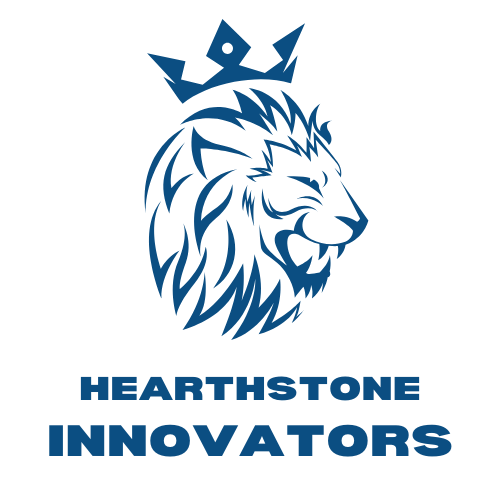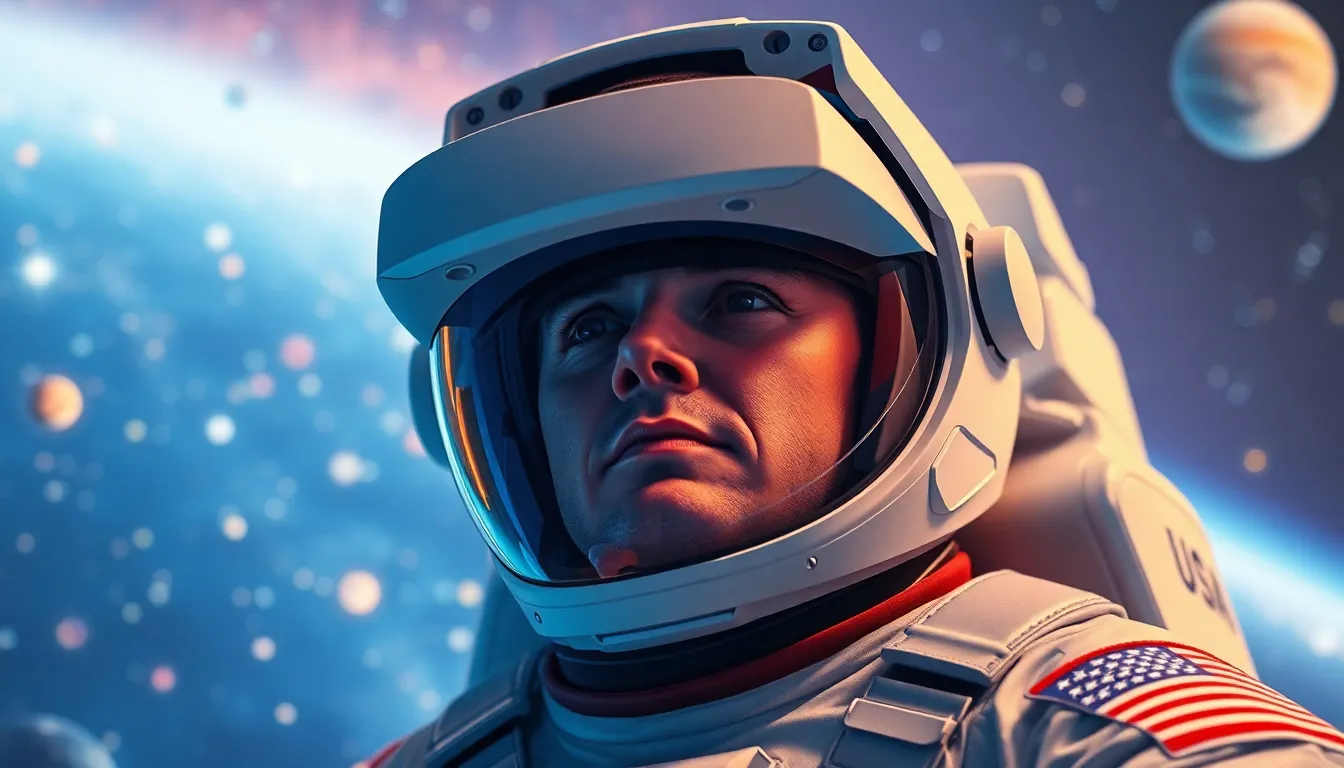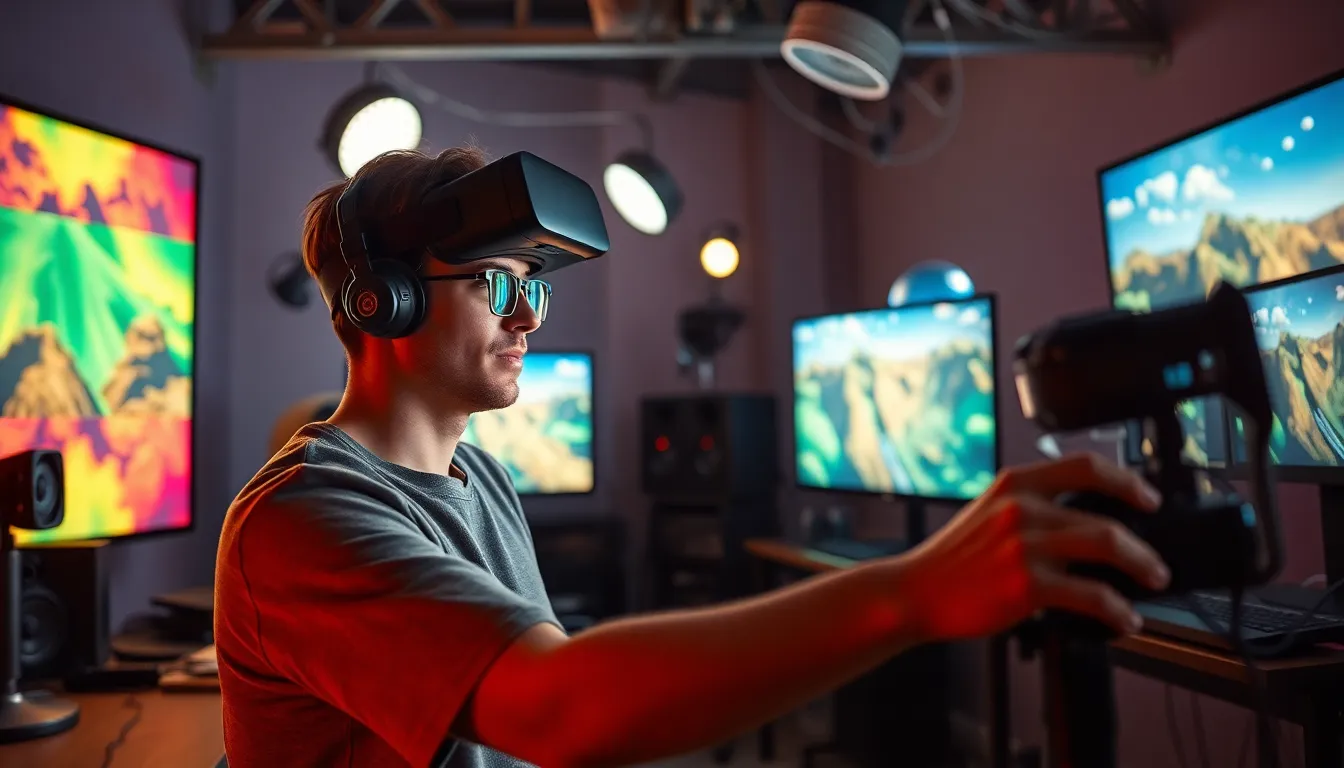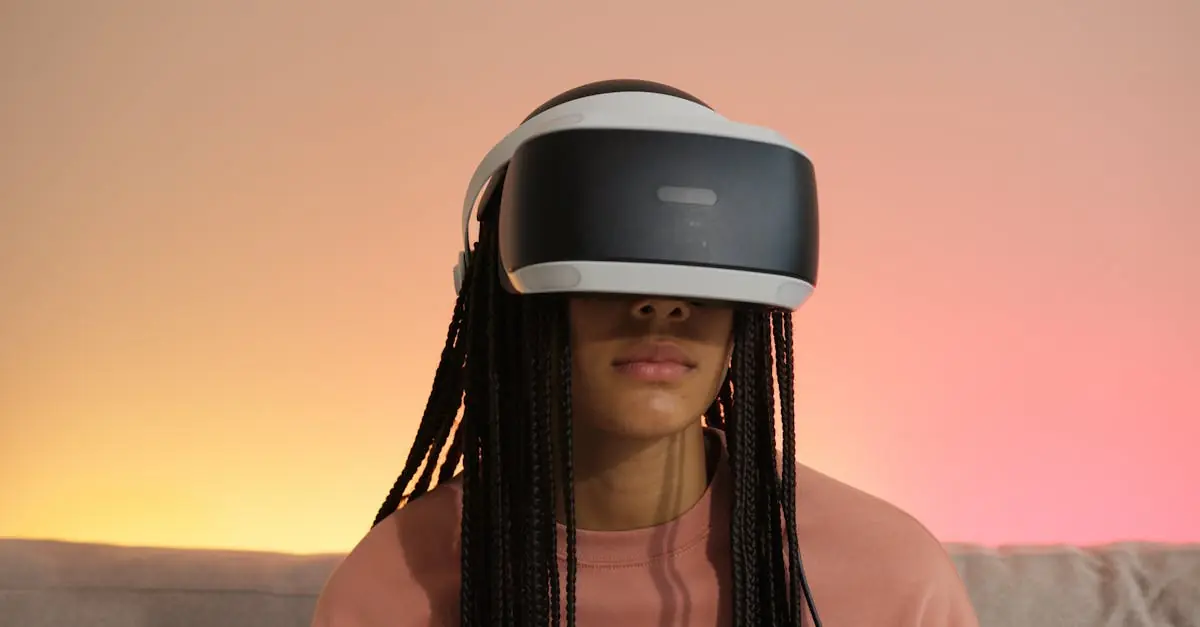Imagine strapping on a headset and instantly blasting off into the cosmos without ever leaving your couch. VR space exploration isn’t just a whimsical dream; it’s a thrilling reality that’s transforming how we experience the universe. Gone are the days of squinting at stars through a telescope—now, you can navigate through the rings of Saturn or stroll on the surface of Mars, all while sipping your favorite coffee.
Table of Contents
ToggleOverview of VR Space Exploration
VR space exploration immerses users in a universe filled with possibilities. Users can experience the vastness of space as if they’re actually there, feeling the enormity of celestial bodies. They can navigate through breathtaking environments like Saturn’s rings or explore the surface of Mars, all from their living rooms.
Companies invest significantly in developing VR technologies that enhance these experiences. Advanced graphics and realistic simulations make interstellar travel engaging and educational. Programs designed for VR space exploration often include guided experiences, presenting users with informative commentary about planets, stars, and galaxies.
Educational institutions leverage VR for teaching astronomy. Students engage with three-dimensional models of the solar system, allowing them to learn about planetary movements and spacecraft dynamics interactively. This approach boosts understanding of complex concepts through visual representation.
Gaming is also revolutionized through VR space experiences. Gamers can embark on missions that involve piloting spacecraft or participating in space battles. These experiences simulate the excitement of being an astronaut, providing an adrenaline rush while educating players.
The collaboration between scientists and VR developers accelerates innovation. Researchers aim to create realistic models of black holes, supernovae, and other phenomena. As technology develops, experiences become increasingly lifelike, leading to a better grasp of the cosmos.
These advancements signal a new era in space exploration. With every update, VR environments become more detailed and realistic. Users’ connections to space will deepen, elevating awareness of scientific exploration and discovery.
Benefits of VR in Space Exploration
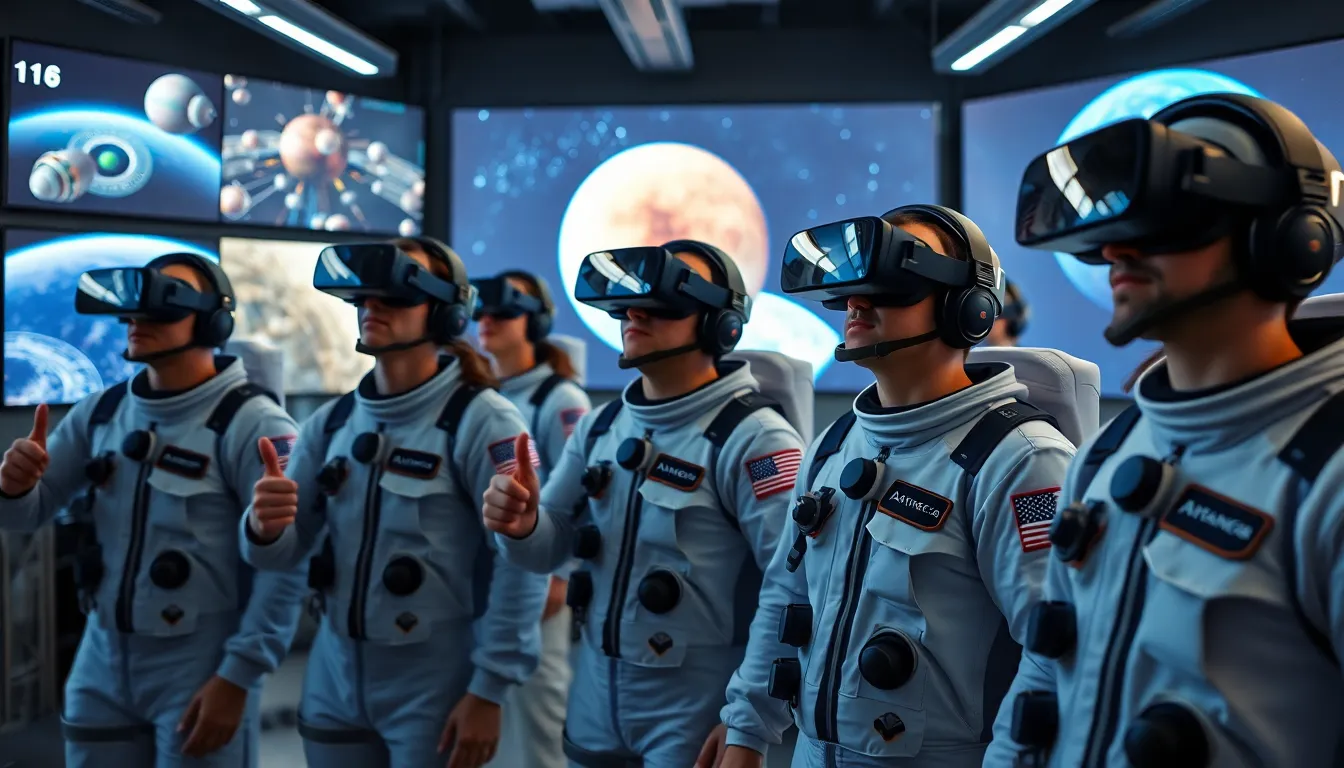
VR technology offers significant advantages in space exploration by enhancing training and educational experiences. These benefits contribute to a deeper understanding and appreciation of the cosmos.
Enhanced Training for Astronauts
Virtual reality provides astronauts with realistic training environments. Astronauts practice mission scenarios without the dangers of space. Detailed simulations help them develop essential skills, such as navigating equipment and performing complex procedures. NASA and other space agencies incorporate VR to enhance training efficiency. Predicting various space mission challenges becomes more manageable through repeated virtual exercises. Trainees can experience weightlessness and learn to react to emergencies, preparing them for real situations.
Immersive Educational Experiences
VR facilitates engaging educational experiences for students and enthusiasts. Students explore the solar system interactively, enhancing retention and understanding of astronomical concepts. Educational institutions utilize VR to create interactive models of celestial phenomena. Practical applications can lead to increased interest in science and technology careers. Users can walk on Mars or navigate a spaceship, making learning feel like an adventure. Collaborations between educators and tech developers yield innovative content, expanding outreach to diverse audiences. The immersive nature of VR enriches traditional learning methods, inspiring curiosity about the universe.
Technologies Behind VR Space Exploration
Advancements in technology drive the realm of VR space exploration, enhancing how users interact with the universe. The integration of powerful hardware and innovative software creates immersive experiences.
Virtual Reality Hardware
VR hardware plays a crucial role in delivering immersive space experiences. High-resolution displays provide users with clear visuals of celestial bodies. Motion tracking systems allow interactions with environments, making users feel present in space. Headsets like the Oculus Quest and HTC Vive deliver captivating experiences with advanced sensors and controllers. These devices enhance the realism of navigating through the cosmos, simulating real-world movement accurately. Premium audio systems further elevate immersion, creating a surrounding soundscape that mimics the vastness of space. Overall, quality hardware significantly influences the depth of exploration.
Software Innovations in VR
Software innovations drive the realism and interactivity of VR space exploration. Cutting-edge graphics engines render stunning visuals, allowing users to witness detailed landscapes of planets and stars. Simulations of gravitational effects and celestial phenomena enhance educational value, providing insights into complex astronomical concepts. Interactive programs enable users to engage with models of spacecraft and celestial bodies, reinforcing learning and exploration. VR applications developed by companies like SpaceX and NASA offer educational content that captures the imagination. Continuous updates in software keep experiences fresh and engaging, ensuring that users discover new aspects of space seamlessly.
Applications of VR in Space Missions
Virtual reality (VR) plays a crucial role in enhancing space missions through immersive experiences and innovative technologies. Various applications showcase its importance in both training and research.
Simulating Space Environments
Simulations of space environments create realistic conditions for astronauts. VR technology allows users to experience life in orbit or on other planets. Astronauts can conduct mission rehearsals within a safe virtual space. Experiencing weightlessness or navigating planetary terrains enhances their preparedness. Companies also design simulated space habitats, aiding astronauts in adjusting to unfamiliar surroundings. Training in these environments improves team collaboration and decision-making skills.
Research and Experimentation
Research benefits significantly from VR applications. Scientists can visualize and analyze cosmic phenomena in interactive 3D environments. Engaging with data allows for immediate manipulation and understanding. Experiments like testing spacecraft materials or studying microgravity effects become more accessible. Collaborative research efforts utilize VR to gather insights in real-time, enhancing efficiency. This tool fosters advancements in astrophysics and space engineering, accelerating innovation in space exploration.
Challenges Facing VR Space Exploration
VR space exploration faces several challenges that need addressing for broader adoption and effectiveness.
Technical Limitations
Technical limitations hinder the full potential of VR in space exploration. System performance often restricts quality, with issues related to latency and resolution impacting user experience. Headsets like Oculus Quest and HTC Vive, while advanced, still encounter constraints in graphics capabilities, which can diminish immersion. Additionally, hardware costs present barriers, limiting access for educational institutions and interested individuals. Software development also requires continuous innovation to keep pace with advancements in graphics engines and simulations. Consequently, these technical challenges prevent VR from fully realizing its capabilities within space exploration.
User Acceptance and Adaptation
User acceptance plays a crucial role in the success of VR space exploration. Initial discomfort with VR environments can deter potential users, as some individuals report motion sickness or disorientation. Education about the benefits of VR experiences can bolster acceptance, guiding users through the adaptation process. Regular updates and user-friendly interfaces help enhance overall satisfaction, which is vital for long-term engagement. Furthermore, building compelling and informative content encourages broader usage in both educational and recreational contexts. Overcoming these user challenges is essential to foster a thriving VR space exploration community.
VR space exploration is reshaping how people interact with the cosmos. By providing immersive experiences that blend education and entertainment, it’s igniting curiosity and inspiring future generations. The collaboration between tech developers and educators is creating innovative content that enhances learning and fosters a deeper appreciation for science.
As technology continues to advance, the potential for VR to revolutionize space exploration grows. Overcoming current challenges will pave the way for broader access and acceptance. Ultimately, VR not only enhances training for astronauts but also makes the wonders of the universe accessible to everyone, inviting all to embark on their own cosmic journey.
